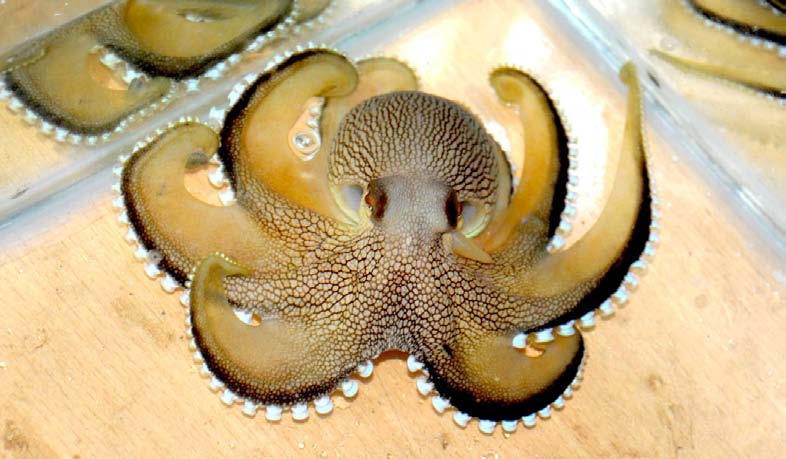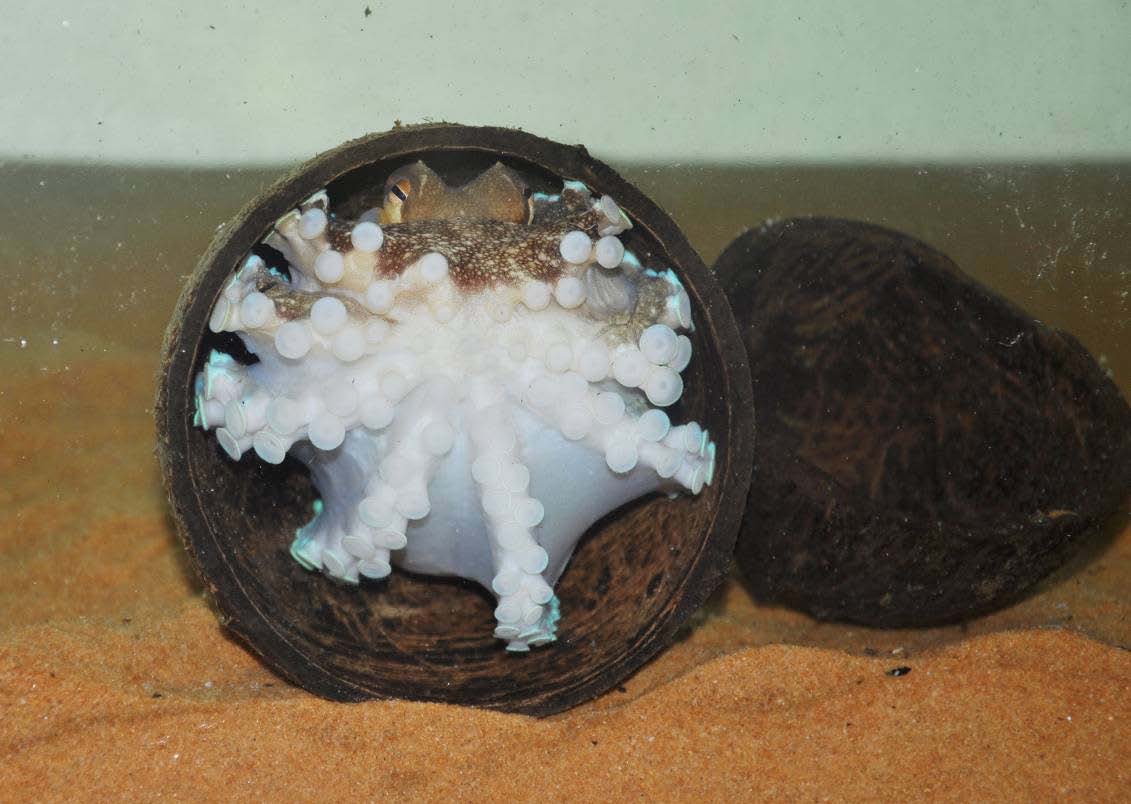Habitat
The Amphioctopus marginatus is found mainly throughout the Indian Ocean; it can be found in regions stretching from South Africa to Japan and all the way down to Australia (Runck 2010). There are many organisms that share this habitat which are neither prey or predators such as the Portuguese man of war which is in the Cnidaria Phylum and the Lunartail Puffer Fish which is in the Cordata Phylum. Many studies of these fascinating octopi have been done in the coconut filled water of Vizhinjam Bay which is located in the Thiruvananthapuram District of Kerala, India (Sreeja and Bijukumar 2013). These intelligent creatures dig up coconut shells and clean them thoroughly before climbing into half of the coconut shell. They suction the other half over themselves creating a small, enclosed space where it is near impossible for predators to attack them. They use a form of locomotion called ‘stilt-walking’ with the coconut shell to bring this protection wherever they go (Sreeja and Bijukumar 2013).
If coconut shells are not available these invertebrates need soft usable dirt to capture prey, dig up shells and walk across the ocean floor. These octopi live throughout the Indian Ocean because they need the sand and mud the habitat provides (Runck 2010). In this habitat of sand and mud you can also find many species such as Sea Cumcumbers burried or partly burried in the sand and mud. Also in this habitat there are a lot of small organisms for the octopi to feed on such as shrimp, crab and clams. According to Allison Runck, the Amphioctopus marginatus squeezes its arm down holes in the mud to catch these smaller organisms (Runck 2010). The Veined Octopus also needs to live where there are sandy bottoms in bays or lagoons because it buries itself in the sand with only its eyes uncovered (EOL 2013). The Veined Octopus uses this strategy of only leaving its eyes uncovered as a form of predation. It sits covered with sand and waits for prey to swim by so it can attack; this mechanism uses minimal energy to obtain its food. Another reason why they cover the majority of their body up is to protect themselves from predators nearby.
The Veined Octopus has specific environmental ranges. The water needs to be between 0-44 m deep and the temperature needs to be between 24.659 and 28.468 °C for the octopus to be comfortable (EOL 2013). There are many other organisms that also have this range of temperature such as the Volitans. Because the octopus is so small, 18 cm long, it does not go into the pelagic level or open water of the ocean because the number of predators would increase dramatically with close to no hiding spots. An example of one of the predators that live in the pelagic level is the Viperfish. Along with that, the octopus uses its coconut shell for protection against predators and coconut shells are mainly found on the bottom of the ocean floor in the benthic level. Nitrate levels in the water should be between 0.239 - 0.807 μmol/L (EOL 2013). This range of Nitrate is toxic to animals but plants are able utilize this range of Nitrate by turning it into usable nitrogen for animals. Smaller prey feed on these plants and the Veined Octopus consumes these prey which ultimately gives the Veined Octopus the level of nitrogen it needs. Also, the oxygen levels need to be between 4.342-4.825 ml/l (EOL 2013) so the octopus can consume the correct amount of oxygen to achieve cellular respiration. Finally, the salinity needs to be between 33.864 - 35.373 parts per thousand (EOL 2013) because if the concentration of salt in the water was higher, the organism would dehydrate itself. On the other hand, if the concentration of salt in the water was too low, the organism would not be able to keep its buoyancy and it would be open to predators. This Octopus has specific world regions, types of ocean floor, and environmental ranges, to keep this organism functioning effectively.
To see more interactions with the Coconut Octopus in this habitat visit our Interactions page or go back to our home page.

